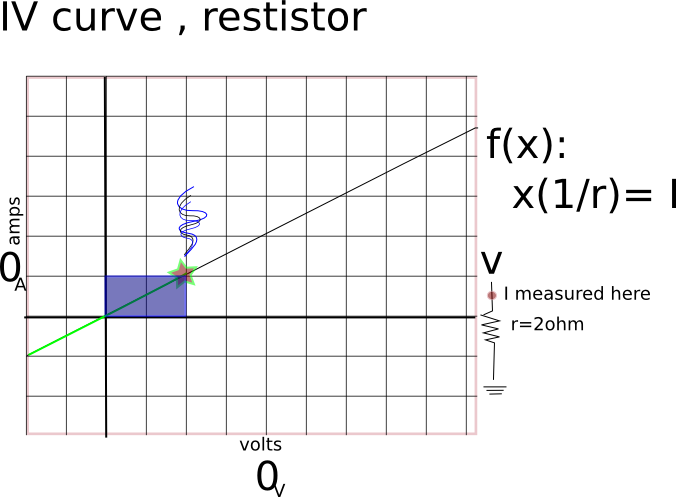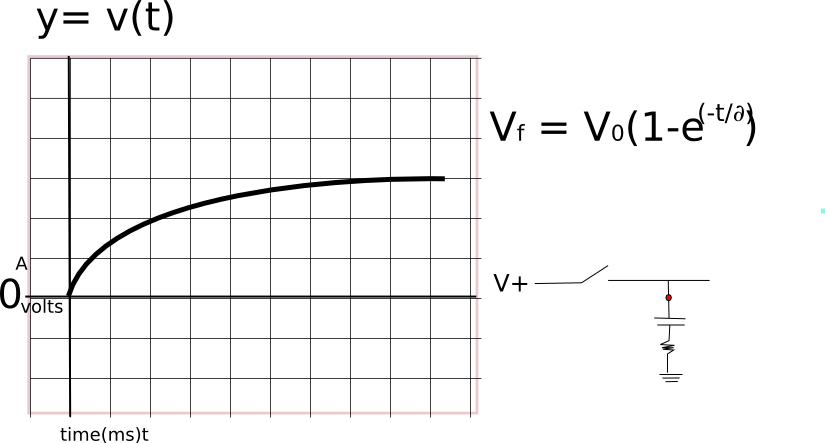ElectronicsClass
From HacDC Wiki
Electronics Class
This class is targeted at the beginner who wants to learn electronics. It would make a fine prerequisite to the Microcontroller Course or the HAMClass
tease
These images form a slide show and a gestalt introduction to electronics. In which we map the techniques available to hackers and their surrounding requisite building blocks.
- [[1]]mindmap
My hacking started with music and production. it wasn't exacly the tech; more for the the ride.
- [[2]] WMUC main studio
Complicated behaviour arises from iteration of simple models. Learning how to operate something like this is simpler and more subtle than it looks.
- [[3]] wheatstone broadcast console
Easier to see is block diagram form; a gestural view of a complex system. WMUC recording suites and broadcast control rooms. Computing.
- [[4]] signal diagram
Why study DC/baseband/RF electronics; anachronism?
- [[5]] chill on the roof.
Space shuttle shots; APRS , RACES, field day. Social technical effects require proficiency.
- [[6]] W3EAX tower
Small systems scale into big ones. 40,000 people at Operation ceasefire (united for peace& justice) '05 at the national mall. Standing between SS, Park police and thousands of protesters.
No always smooth sailing.
- [[9]] mars needs bolts
Building whimsey.
- [[10]] lightup dance floor
Computer control over physical objects. microcontrollers + christmas tree lights.
- [[11]] dance floor controller
Not always smooth. Electrical compatibility != political compatability
- [[12]] hhr - phear the transaxle
More small systems iterated.
- [[13]] fireworks diagram
DIY Ignition source in Berlin. in a pinch you don't need a parts catalog.
- [[14]] igniter controller
Apologies to Dakami
- [[15]] fireworks crates
Simple systems, RC control, Robots and igniters.
- [[16]] wm greek fire
Required Materials
- Multimeter $4
- Soldering Iron (25-30w) $10
- Solder ( 22ga )
- Bread Board ( or AshClassBoard ) $10
- wire 24ga
- 30ga solid core wire
- Resistors 10kohm
- variable resistor 10kohm linear $1
- switch [[17]]
- leds (various)
- capacitor 470uf (ish) [[18]]
- pn2222 transistor $.03
- 1/8 male phono jack
Read The Fine Data Sheet: They hide secrets in the documentation.
Metering
There are many like it but this one is mine.
- Naming of parts
- metering modes
- restistance - Ohms of resistance
- voltage - Volts
- Current - Amps/Milliamps - check the leads
- diode check - see [Diodes]
- leads - plugged into the right ports?
- metering modes
- Continuity testing
- set the meter to the lowest resistance mode (200ohms or auto resistance)
- reads "off scale" when the leads are unconnected, this is an open circuit
- firmly touch leads together
- reads near 0 if the leads are crossed
- Voltage testing
- set meter to 20Vdc or VautoDC
- touch leads to metered points
- the reading on the meter is the difference in voltages between the leads
Soldering
Hold the cold end.
Soldering ( for our purposes ) is the process of joining electrical contacts with a low melting point metal to make a mechanically and electrically strong connection.
- Restrain long hair/clothing/jewelry.
- Clean both parts of waxes, oils or debris.
- Mechanically fit connections together
- Clean and wet the iron
- Heat both parts until hot
- Apply just enough solder to wet the contact surfaces
- Wait for the connection to shine smoothly
- remove the iron an test the connection
- the meter should find near 0 ohms of resistance between the two parts even when mechanically stressed.
- the meter should read "off scale" to everything that should be isolated
SwitchLab
- use the continuity meter to diagram the electrical layout of the switch.
- solder switch to the board.
- test under power with meter voltage setting
Wire
The basic wire is a pipe through which electrons can flow from the lowest voltage side to the highest (conventional current) up to the physical limits of the wire.
- Current limit via wire gauge [19]
- Voltage limit via insulation.
- Magnetic and Electric fields surround an energized wire (what?!)
- And wire will respond with current when moved through magnetic flux
Relays/Switches
Codespeak
- SPDT - single pole dual throw
- DPST - dual pole single throw
- 4P10T - ???
- Map this mystery switchLab Electromechanical relay is a switch that's controlled electrically.
pros
- Easy to design for
- debugging (listen for satisfying click)
- excelent isolation
- high power control/$
cons
- high drive current (mostly)
- noisy (mostly)
- slow
- moving parts (eeew)
a typical relay - map this mystery relay lab
BlueSmokeLab
Get this out of the way early (and often)
- turn off the switch
- Solder the 30ga wire ends on to the lab 0 area
- stow fingers away from wire
- turn on switch
Power
- Measured in watts (usally)
* .01w laser pointer * .25w cell phone * 1w * 15w car stereo * 25w soldering iron * 100w light bulb * 1500w hair dryer * 200 horsepower (750w/hp) * 3 tons of Air conditioner capacity (3.5kw/ton)
- The notion of instant work
- Energy or work is expressed in joules (watt*second). Or perhaps (Kw*H)
- Power(watts) = Current (Amps) * Volts
Resistor
Not like the NYC variety
Resistors impede the flow of electrons across them; usually to protect components from excessive current.
- Ohm's law
- Diagonal IV curve.
- symmetric
ResistorLab
- solder resistors, meter and record;
- compare to ohms law math
Diode
ScaryDataSheetLab
- a favorite led [20]
- LED ( Light emitting diode ) are diodes with a clear case.
- electrons only permitted to flow in one direction: cathode to anode
- there are exceptions [diode breakdown voltage]
- discontinuous IV curve
- diode logic
- the cathode is marked
- the diode check function of the meter can reveal the correct polarity of a mystery diode with a suspect cathode mark.
Light Emitting Diode
- the short lead is the cathode
- LED's need current limiting (see BlueSmokeLab)
LEDLab
- solder in 1kOhm resistor for the led , although you may use another if you can justify the value
- Solder in the LED, with the short lead towards the ground.
Motor
Printed Circuits
Capacitor
470uf electrolytic cap
Transistor
PN2222 N channel transistor
little amplifierlab
- class A amp
- DC blocking caps
- bias resistors
- fixed gain
- inverted waveform
Digital Logic
- AND C = A & B
- OR C = A | B
- NOT C = !A
- NOR C = !(A|B)
- NAND C = !(A&B)
- MUX C = select A(n) based on B(n)
IC
LM386 Audio Amplifier [21]



